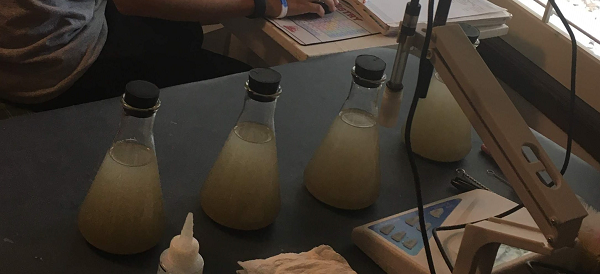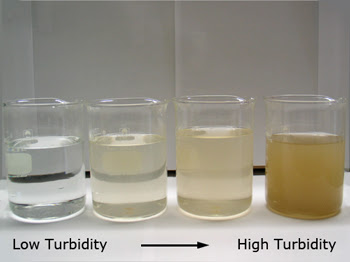Over the past month Kaley has been researching from her home in Oklahoma City to answer the question: does the method of mixing moringa with dirty water affect residual water clarity for different clay solutions? Specifically, what combination of agitation speed and agitation time settles turbid water to less than 25 NTU the fastest?
NTU is “Nephelometric Turbidity Units” and is a measure of water turbidity (cloudiness). A reading of 25 NTU looks pretty clear to the naked eye. A reading of 100 is noticeably cloudy. At 500 NTU, the water looks nearly opaque. This is applicable to our friends in Cambodia because their ceramic filters operate most efficiently for removing bacteria when the water put through the filters is ≤ 25. Stir speed and stir time can also be controlled more easily than chemical variables such as pH, conductivity, or salinity.
This past week Kaley finished her first set of trials comparing how fast different clay solutions settled to ≤ 25 NTU when mixed at different speeds and for different lengths of time. Two stir methods were tested:
- Group 1 was stirred at 240 rpm for 10 seconds, and
- Group 2 was stirred at 100 rpm for 10 minutes.
Across the four different clay solutions (bentonite, green sea, kaolin, and rhassoul), three of them settled faster in Group 2 than Group 1. The exception was bentonite in which there was no difference in settling efficiency between the two groups.

Since these trials varied both agitation speed and agitation time, it is unclear which variable contributed to the faster turbidity reduction. The next stage of experimentation will compare settling efficiency when 1) stir speed is held constant with varying stir times and 2) stir time is held constant at varying stir speeds.


